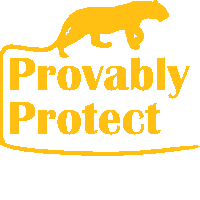The property can be resold for a potential profit, but take note that there is no guarantee of prices rising or being able to sell the property again, so please don't spend money that you can't afford to lose.
Secondly, you can 'develop' your property by using the virtual tour creation software included free on every plot. This has the effect of increasing the value in terms of marketing potential and selling probability.
This is how travellers can benefit from virtual tour creation and here are some tips on how best to do virtual tour photography.
If you own an African safari business, virtual tour creation is one of eight ways your company can benefit from using the Provably Protect marketing platform.
After purchasing your own property you can login to the virtual tour creator here...
It's possible because these properties are a digital representation of the physical world using a map.
By creating a NFT for each plot available on the platform, Provably Protect allows anyone to own, buy and sell the digital, but not the physical, real estate. No rights of any sort are obtained on the actual physical real estate by purchasing the digital NFT.
It's all for a very good cause because 90% of the initial sale price and 8% of the secondary sale price of every digital property purchase gets contributed to a conservation organization on the frontlines of wildlife protection and preservation.
The prices for requested properties are determined by the length of the perimeter road of each property in metres (feet), multiplied by the dollar amount per metre (feet), which has been determined by Provably Protect for each national park or game reserve.
So the plots with the most perimeter road will be the most expensive and the ones with the least will be cheaper, even if they may be larger in size overall.
The reason it's done this way is because the properties with more perimeter road provide better opportunities for seeing wildlife, if the digital real estate owner were to ever visit the physical property on an African safari.
After a requested property has been bought, the new owner sets the selling price if they decide to put it back on the market again for sale.
The conservation efforts of the owners of the physical property are supported by sales of Provably Protect digital properties. This helps their ability to make a meaningful difference to the protection and preservation of the national park or game reserve in which the digital real estate is situated.
Without these organizations efforts the physical real estate might cease to exist in their current form as wildlife protection areas.
When a Provably Protect digital real estate owner successfully sells their property at a price determined by them, they are entitled to 90% of the proceeds, minus the transaction fee of the platform they are selling the NFT on.
The relevant conservation organization gets 8% and Provably Protect 2%.
When you buy a digital property, you become a member of the Provably Protect community, and you will be eligable for a 10% travel discount if you ever decide to go on an African safari to visit the physical area covered by your digital real estate.
Buying and owning the digital property doesn't confer any rights at all regarding the actual physical real estate or property.
What it does do is help the conservation efforts of the owners or protectors of the physical property themselves so that they can continue to conserve the wildlife in that area.
Provably Protect NFTs are minted on the Polygon blockchain, which consumes a reasonably small amount of energy for each transaction compared to blockchains like Ethereum and Bitcoin.
Estimates of the carbon footprint of a Polygon transaction vary from 0.3 grams (Source: Polygon blockchain blog) to 430 grams of CO2 (Source: Digiconomist).
Ideally, NFT minting and transactions should be carbon neutral, especially for the conservation NFTs that Provably Protect specialises in.
So, to ensure that Provably Protect minting and transactions on the Polygon chain are carbon neutral, we offset the upper transaction carbon footprint estimation of 430 grams of CO2, for every single NFT transaction that occurs on our marketplace.
And we do this by contributing towards the planting of trees in forest areas of South Africa in the Western Cape.
Find out more about Provably Protect NFT carbon offsetting.
When you buy a physical property, the title deed gets stored at a deeds office.
When you buy digital property here, Provably Protect acts as the deeds office for you, keeping the property title deed (NFT) that you bought in storage, in your name.
So there is no impediment to owning these digital properties even if you don't have a crypto wallet or any cryptocurrency and never plan to get in future.
Feel free to ask by getting in touch with us...
